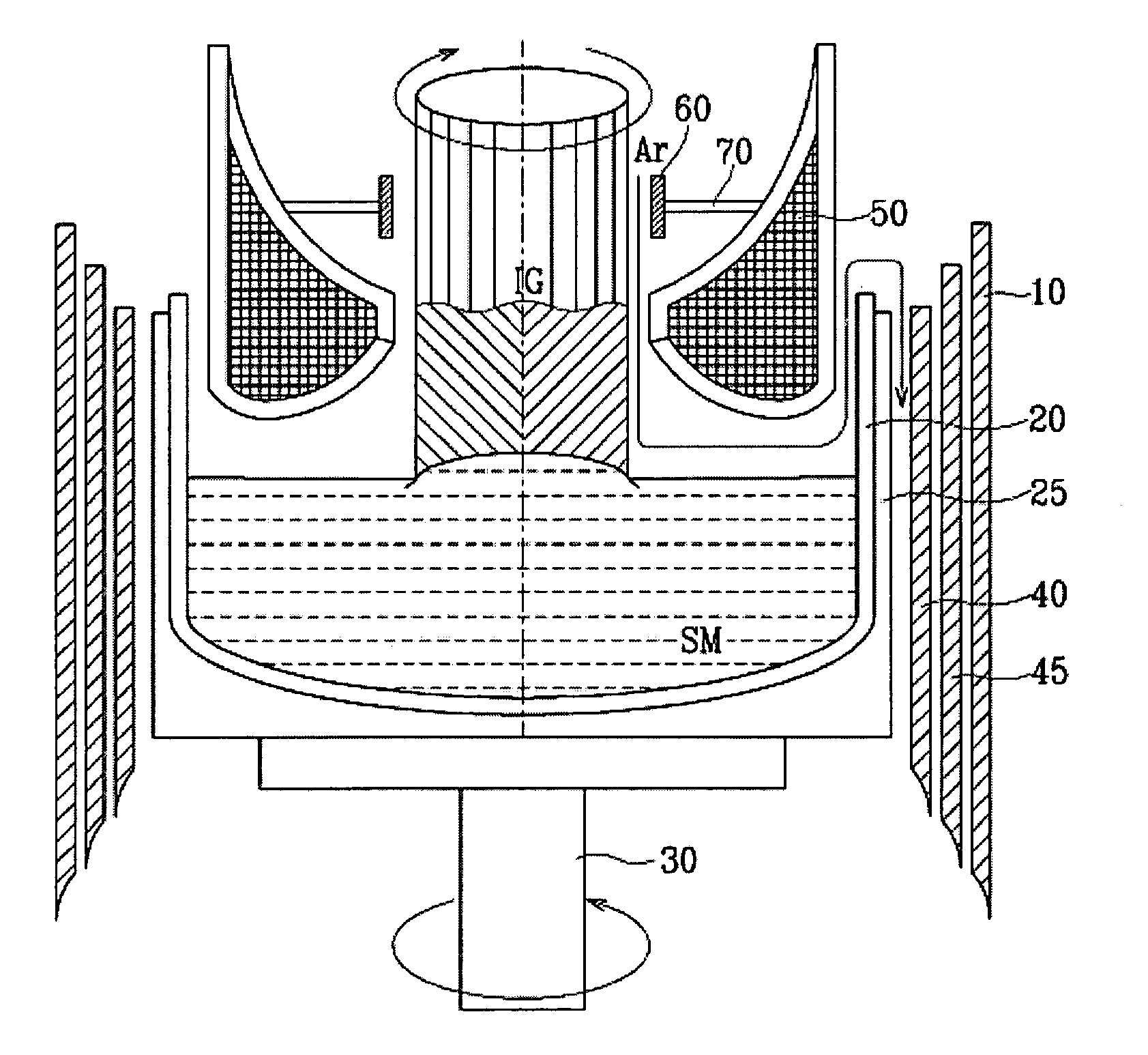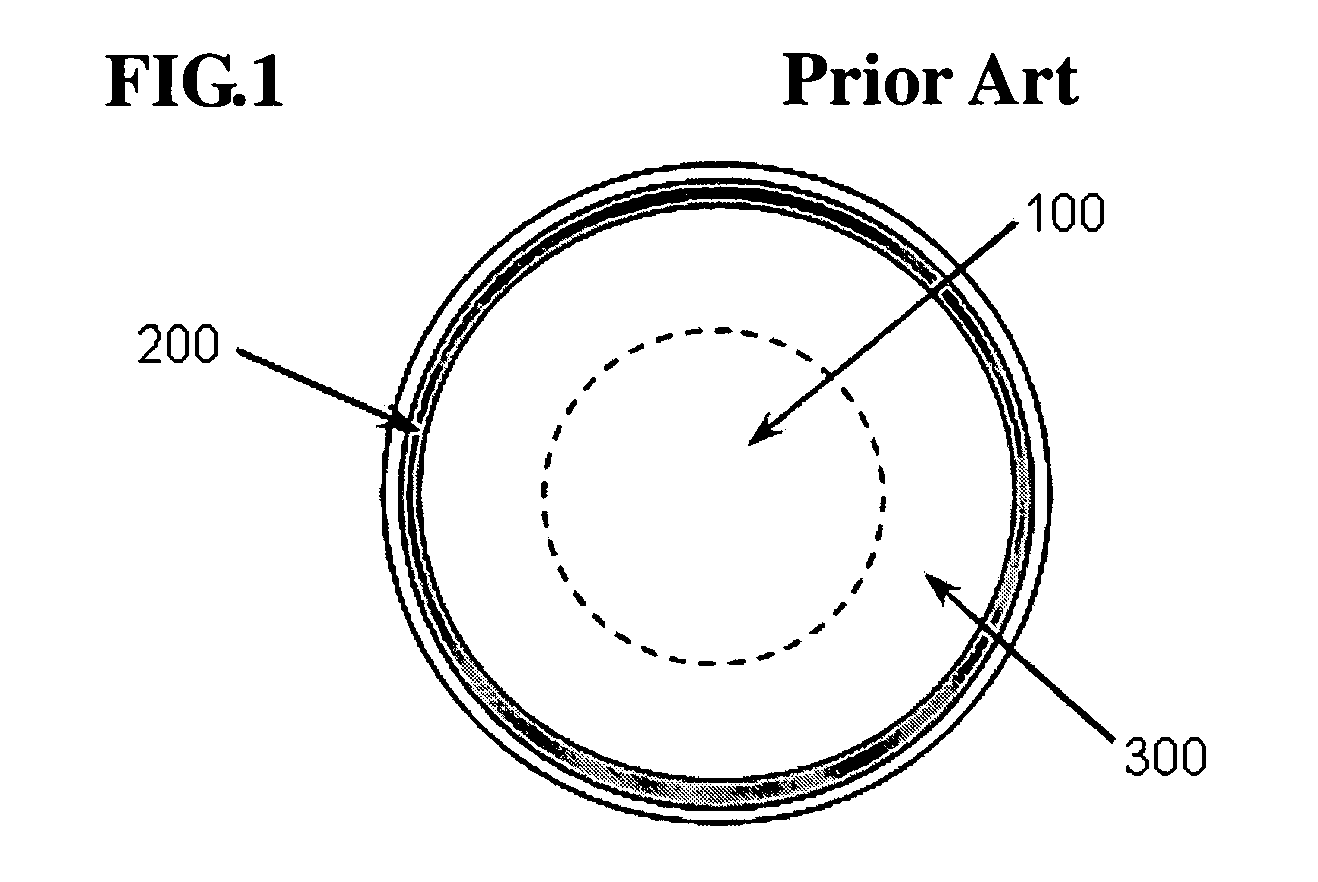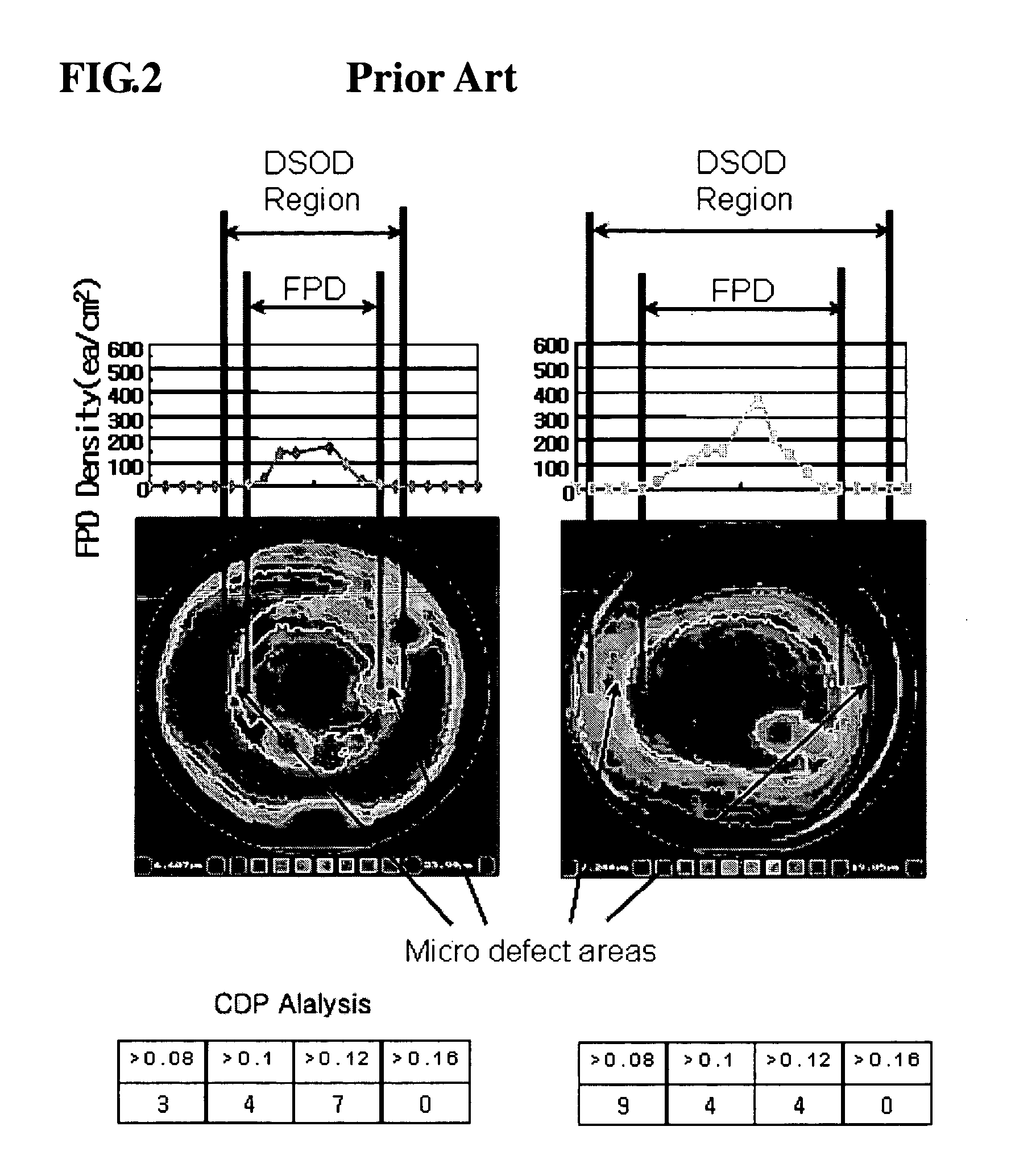Single-crystal silicon ingot and wafer having homogeneous vacancy defects, and method and apparatus for making same
a single crystal silicon, homogeneous technology, applied in the direction of silicon compounds, under a protective fluid, transportation and packaging, etc., can solve the problems of coarse vacancy defects, adversely affecting the voltage-resistance characteristics of single crystal silicon, and coarse vacancy defects at the center part, etc., to achieve high quality and low defect
- Summary
- Abstract
- Description
- Claims
- Application Information
AI Technical Summary
Benefits of technology
Problems solved by technology
Method used
Image
Examples
Embodiment Construction
[0050] The present invention enhances the voltage-resistance characteristic of an oxide layer in the single-crystal silicon grown by the Czochralski (CZ) method by growing a single-crystal silicon ingot in a manner whereby each micro defect is smaller than the critical size that adversely affects the voltage-resistance characteristic of an oxide layer (typically 0.065 microns), and each coarse defect larger than the critical size is distributed in the radial direction.
[0051] The voltage-resistance characteristic of an oxide layer of the device fabricated on the single crystal silicon substrate can be represented by the tolerable voltage and time before the silicon oxide layer formed on the silicon wafer is destructed and the insulating property of the silicon oxide layer is disappeared.
[0052] In one embodiment of the invention, the outer circumferential part of the ingot is cooled faster than the center part is cooled, and the thermal history of the ingot is uniformly distributed ...
PUM
| Property | Measurement | Unit |
|---|---|---|
| temperature | aaaaa | aaaaa |
| temperature | aaaaa | aaaaa |
| size | aaaaa | aaaaa |
Abstract
Description
Claims
Application Information
 Login to View More
Login to View More - R&D
- Intellectual Property
- Life Sciences
- Materials
- Tech Scout
- Unparalleled Data Quality
- Higher Quality Content
- 60% Fewer Hallucinations
Browse by: Latest US Patents, China's latest patents, Technical Efficacy Thesaurus, Application Domain, Technology Topic, Popular Technical Reports.
© 2025 PatSnap. All rights reserved.Legal|Privacy policy|Modern Slavery Act Transparency Statement|Sitemap|About US| Contact US: help@patsnap.com



